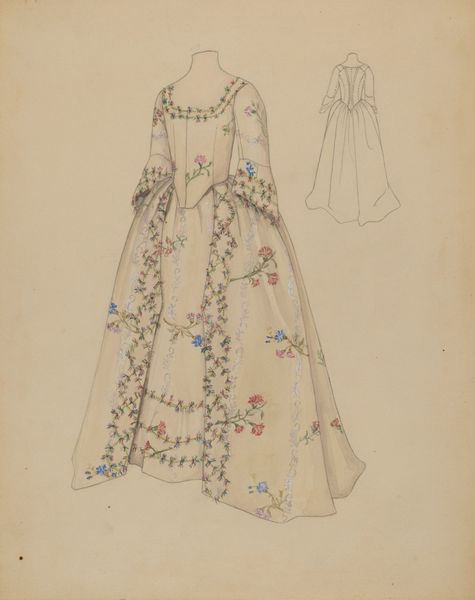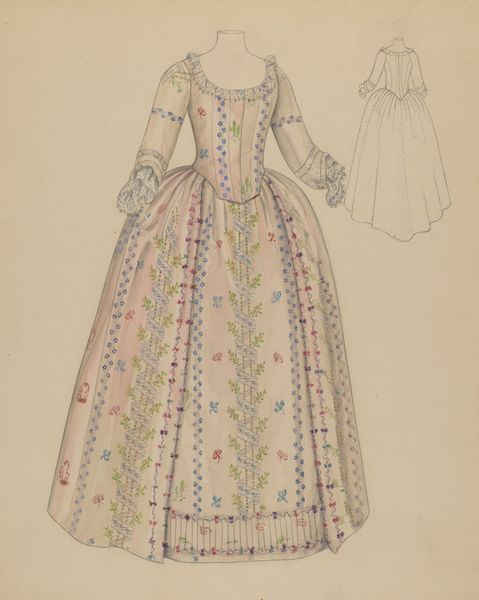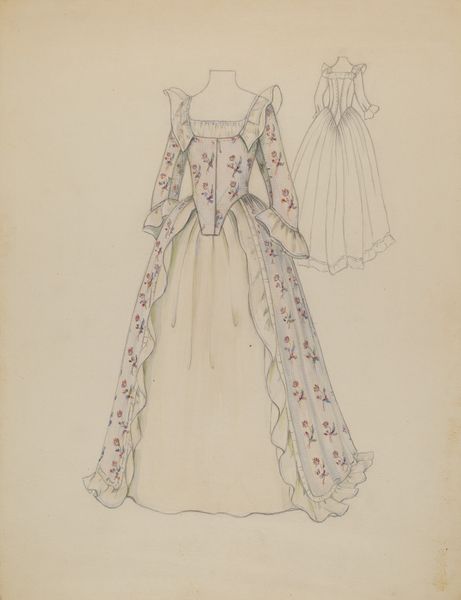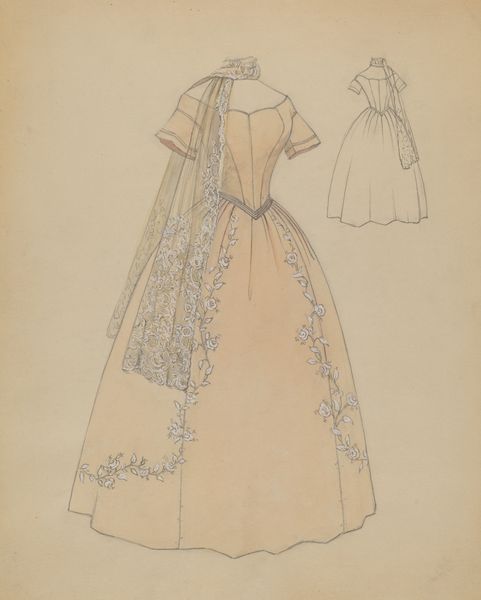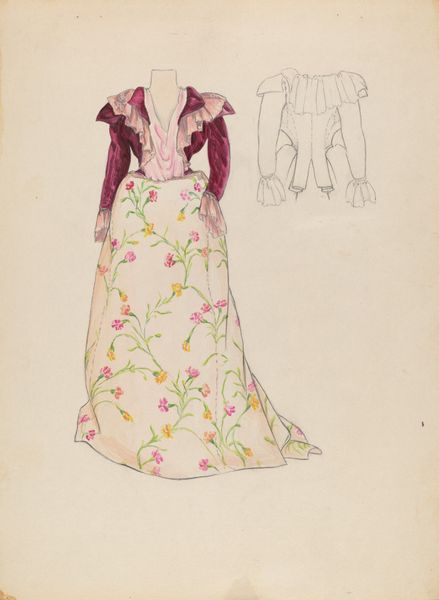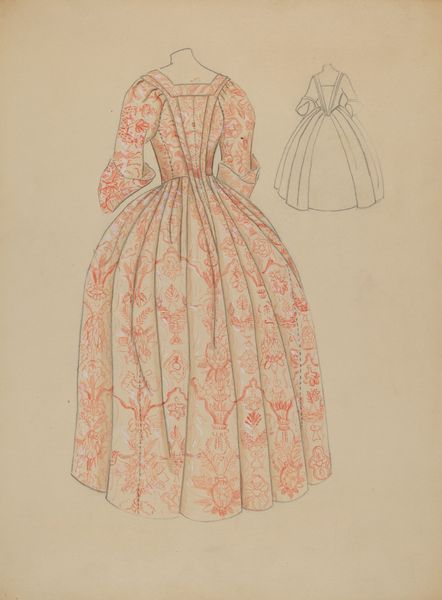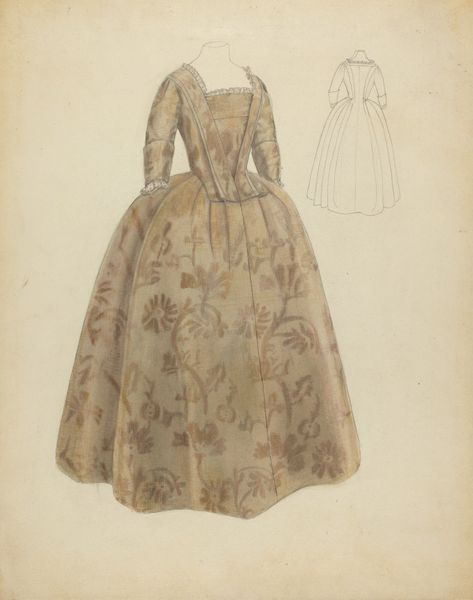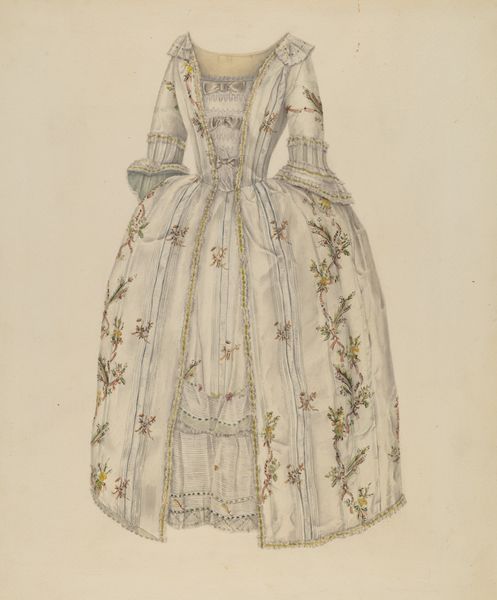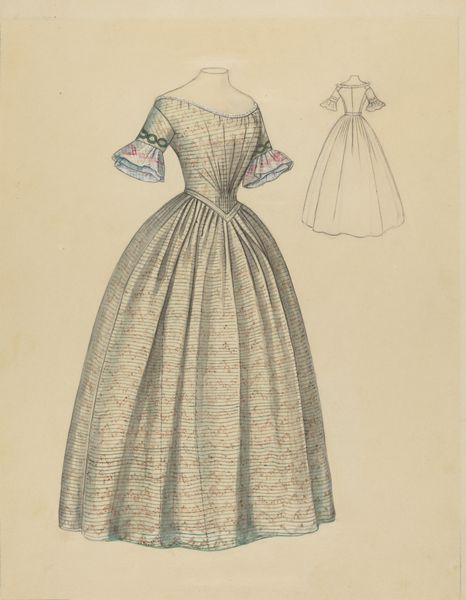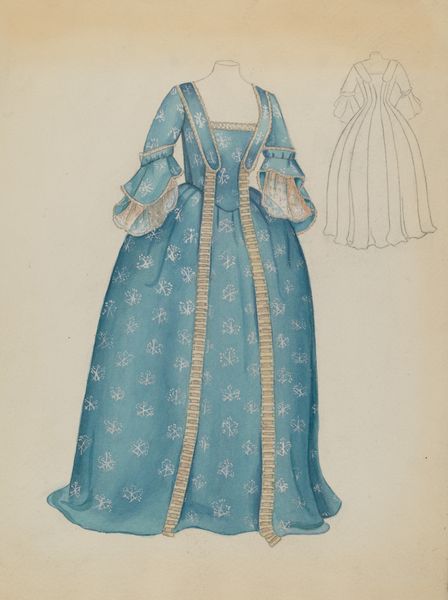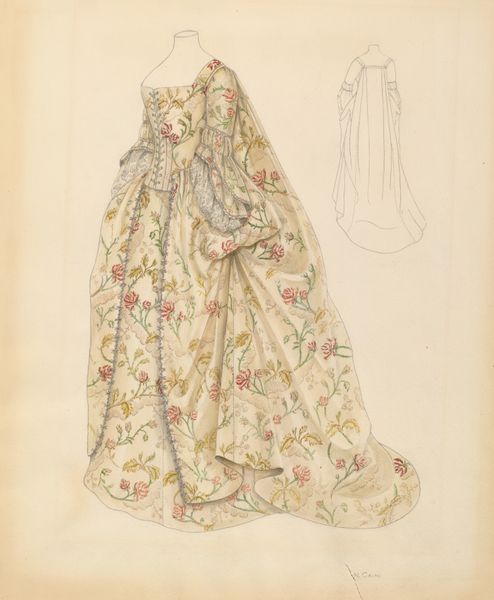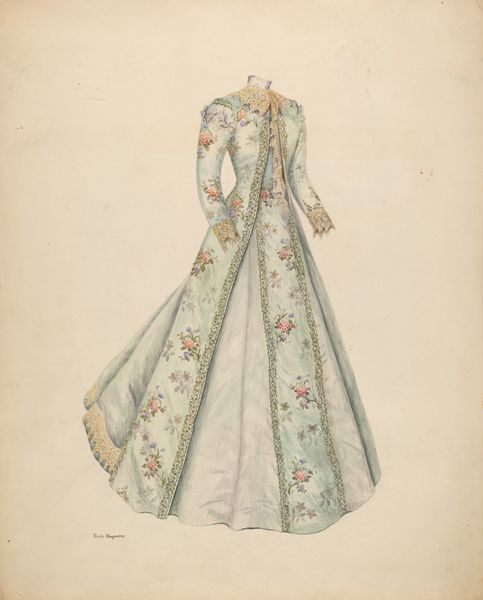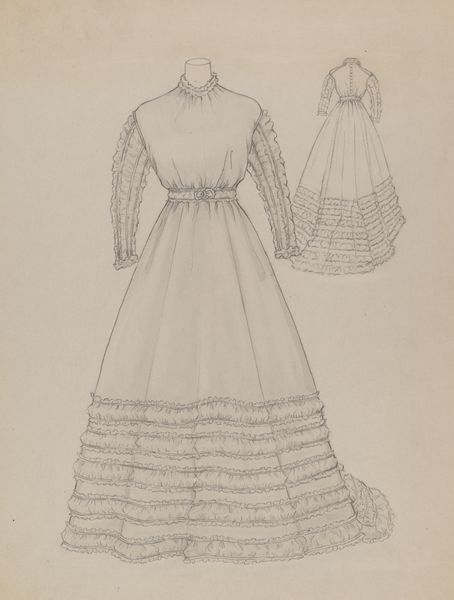
Dimensions: overall: 28.9 x 23.1 cm (11 3/8 x 9 1/8 in.)
Copyright: National Gallery of Art: CC0 1.0
Curator: This delicate fashion sketch, "Dress," crafted around 1936 by Nancy Crimi, employs pencil and colored pencil on paper. What's your initial impression? Editor: Ethereal, almost like a dream. The dress itself seems caught between worlds, the sketchiness lending it an ephemeral quality. Is this meant to be some kind of Romantic Revival fantasy, even for its time? Curator: The very act of sketching, the preliminary work that went into fashion design – that’s really what fascinates me. Pencil marks that map the design’s structure! These types of works foreground the means through which such a garment becomes. It exposes labor. Editor: Absolutely, and yet, consider the time: 1936. The shadow of the Depression looms large. Could this drawing be interpreted as an aspirational symbol, a delicate protest against the economic hardships, or even a wistful return to imagined past glories? Curator: That's compelling, because the attention to detail, particularly in the floral patterns, really makes you consider the amount of labor necessary. This contrasts strongly with our modern fashion industry of cheap fabrics and mass-produced patterns. We have to also consider how color pencil became affordable during the 1930s and what role new means of material expression meant to female artists. Editor: I also can’t ignore the deliberate gesture of placing the sketch against an otherwise unmarked surface. It allows a kind of space for this figure, perhaps mirroring its sense of a detached femininity in society. Curator: Good point. It emphasizes the garment as both object and idea. These lines weren't only to give shape to the piece, but it gave agency and status to the field of the decorative arts during the Depression era. Editor: And Crimi places that on our plate to grapple with decades later. What do we make of these feminine forms that refuse a stable identity? Curator: Precisely. Well, this has certainly opened up new angles for how I see the process of visualizing fashion! Editor: It’s a useful exercise. Let’s remember how visual fantasies may mask as other concerns relevant for thinking about our world today.
Comments
No comments
Be the first to comment and join the conversation on the ultimate creative platform.
